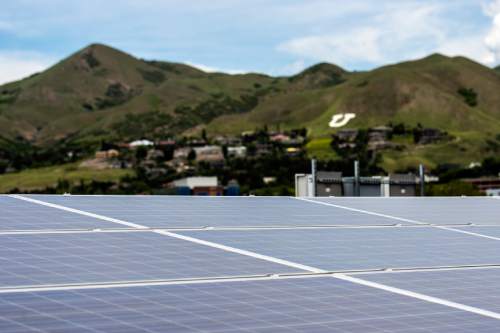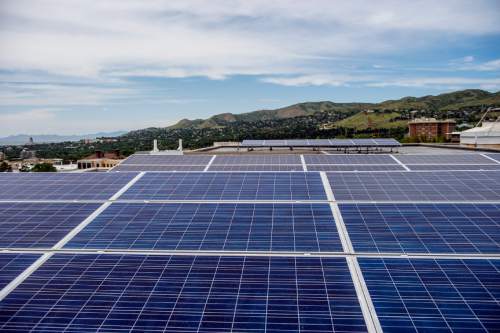This is an archived article that was published on sltrib.com in 2015, and information in the article may be outdated. It is provided only for personal research purposes and may not be reprinted.
With more than 280 buildings and 13 million square feet of indoor space, green energy would seem elusive if not impractical at the University of Utah.
And yet, the U.S. Environmental Protection Agency this week ranked the school eighth in the nation and first among Pac-12 schools in the College and University Green Power Challenge results.
The ranking marks a long-term campus campaign to improve energy performance by 2020 and be carbon-neutral — where the school's net greenhouse gas emissions equal zero — by 2050.
The university purchased 85,926,100 kilowatt-hours of renewable energy during the 2014-2015 school year, bringing such power up to 28 percent of the school's total energy use.
That equals the energy and emissions savings of removing 12,400 cars from Utah roads.
"We are pleased and excited to be promoting and incorporating renewable energy at the U. in multiple ways," Amy Wildermuth, chief sustainability officer for the school, said in a prepared statement. "We take pride in knowing we are helping to create multiple pathways to sustainability."
The U. is working toward the carbon-neutral goal as part of the U.S. Department of Energy's Better Buildings Challenge, Wildermuth said. Last fall, the U. was recognized for cutting energy use in the historic Dumke Health Professions Education Building by 40 percent — an annual savings of $57,000.
Each semester, U. students kick in $1 toward the purchase of renewable power through their fees. The school has also launched the U. Community Solar Program, which helps members of the university community buy and install discounted solar panels for their homes.
Myron Willson, dirctor of the U.'s Sustainability Resource Center, said there are eight solar installations on campus, including a new system built on the Marriott Library's roof this spring. In all, the solar arrays generate 766 kilowatts of electricity.
The solar installations are intended more as a showcase for renewable power, Willson said, than as a money saver. Their combined impact on the university's energy bill still is minimal.
"We're a big, hungry campus," he said. "A fume hood uses the equivalent [power] of three houses, and we have hundreds of them around campus."
Besides the solar and other renewable-energy initiatives, Willson said, the campus is developing programs for recycling and water conservation.
The student fee offsets roughly a third of the U.'s electrical use and the school is on track for its carbon-neutral goal.
"We're working on all of those initiatives," he said. "We keep track of our greenhouse-gas emissions every year."











